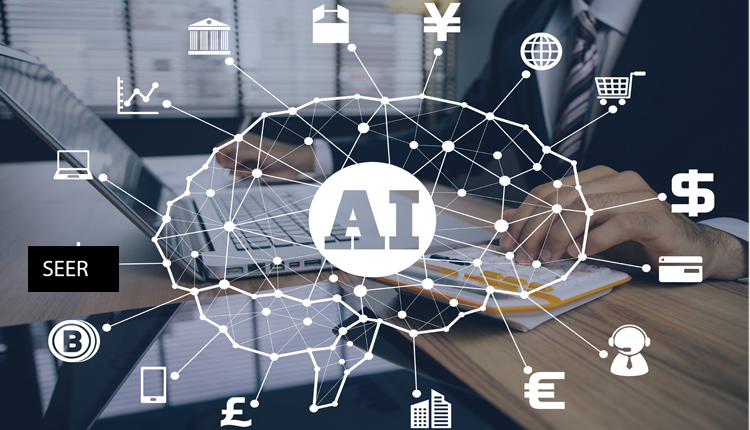By Navin Dhananjay, Chief Solutions Officer at Ugam, a Merkle company
With the dawn of the Internet in 1990s, the world experienced a paradigm shift. Every business, every individual, after being awestruck, confused, and shocked adopted connectivity to create, explore and work. Today, we cannot fathom a world without the internet.
Today, we are on the verge of another massive technological shift with artificial intelligence (AI) and machine learning (ML). Just like the internet, AI will be a part of our lives in every possible way – be it interacting with businesses, working, travelling, shopping and so on.
Do businesses need AI?
COVID-19 accelerated our dependency on technology. In the absence of direct human connect and accessibility, we leveraged the capabilities of the internet and digital technology to stay informed, connected and even solve social problems resulting from the pandemic. Our healthcare systems relied on AI to collect, analyse and access patient data to make better decisions for society. AI, particularly, played an important role for businesses by enabling personalized services on a larger scale to engage, interact and solve customer issues.
Inaccessibility of AI and ML to every business
There is a lack of knowledge of resources and tools to implement a data-driven AI ecosystem. Moreover, in building in-house AI systems, there are challenges:
• Lack of a good mix of native data platforms, AI toolsets and partly-cloud technologies
• Shortage of niche skilled manpower (data scientists, data SMEs)
• No formal training or understanding of AI among business teams
• Minimal performance monitoring and reuse of AI models
• Inconsistent and time-consuming processes for getting data and models into production
However, organisations can adopt simple methods like outsourcing AI technology for the business, training existing talent, or gathering knowledge to build data-driven solutions to solve simple business problems. For example, an online footwear fashion house leveraged AI to get 700,000-odd SKUs processed across three major product categories in nine weeks. With access to AI, just 10 lines of code can embed an algorithm to perform complex functions like object detection, recognition, and attributes.
The building blocks of accessible AI
1. AI-ready no-code/low-code cloud platform
No-code/low-code cloud platforms are visual software development environments that enable developers to drag and drop application components, connect them and create mobile or web apps. These methods let developers quickly build applications by relieving them of the need to write code line by line. They also enable analysts, office administrators, small-business owners and others to build and test applications. Thus, anyone can create applications with little to no knowledge of programming languages or machine codes. The growth of no-code/low-code platforms has thrived due to a lack of skilled software developers and the need to improve turnaround time for developing projects to solve business problems.
2. AI-trained multidisciplinary ecosystem
Building AI ecosystems requires a range of skills that few possess. For example, a developer will be well versed in coding and creating an algorithm whereas an ML engineer optimizes and integrates research models while consistently monitoring their output. Businesses need to build and empower specialized teams with varied skills to accomplish an effective AI ecosystem. This can be achieved by training, reskilling and upskilling talent in-house. Businesses can thus augment the workforce so that they have people to validate, annotate the outputs and help in active learning of the models. These steps can support businesses to transform and aid widespread adoption of AI as well as build a future-ready talent pool for technological innovations.
3. Integrated AI operations
Developing a data-driven ecosystem involves adoption of advanced specialties like AI Ops, Data Ops, ML Ops and Decision Ops. Each of these have a key role: AIOps is the application of AI in IT automation and operational management, where data is leveraged to correlate, predict and advise actions; DataOps brings agility to data, which is the most important element of any ecosystem; MLOps focuses on model cataloguing, version control, compute orchestration and scheduling, and involves feature engineering, hyperparameter optimization, inference and the deployment of a model for inference; and Decision Ops defines the rules to follow when creating a test suite, simulation or deployment configuration.
To successfully build a data-driven ecosystem, it is vital to integrate all these functions for a seamless workflow and efficient output. The online footwear fashion house mentioned earlier used the three building blocks of accessible AI which resulted in improved productivity across the business. The teams could build their computer vision models, validate outputs and re-train models to get the output. The quality and standardization of output were assured and a centralized ML pipeline was available for other delivery streams for similar use cases. This multiplied the impact achieved in the first delivery.
The building blocks have better success if technology, people and process are aligned. The mature AI-ready no-code or low-code cloud platform enabled scalability for users and use cases. The multidisciplinary ecosystem assisted in scaling deliverables and enabled faster business adoption. And an integrated AI Ops process facilitated standardization and automation.
Thus, designing accessible AI requires standardized end-to-end integrated toolsets on the cloud, wider adoption, more interpretable AI, continuous performance monitoring of AI models, and integrated operations to make it successful. Companies can take these small steps towards building an effective data-driven ecosystem and adopt AI practices for solving and enhancing business processes profitably.


